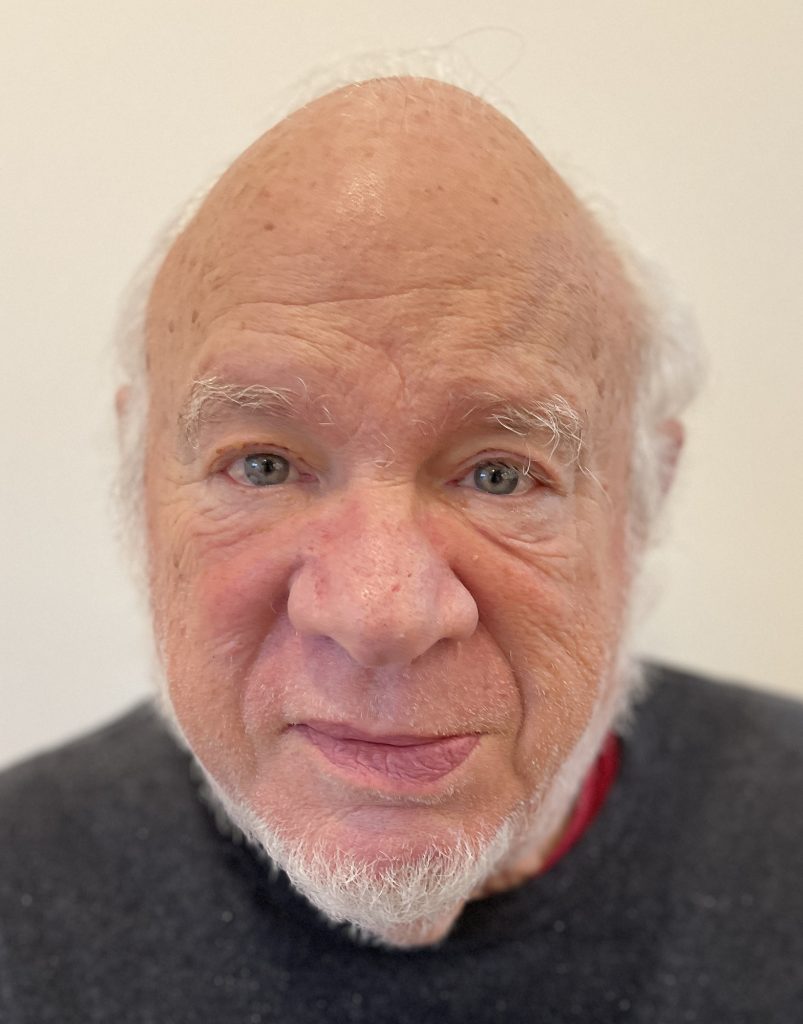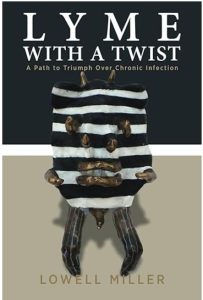Battling a devious bug for 40 years and finally finding hope

By Lowell Miller
I became a host for Borrelia burgdorferi (the microbe at the root of Lyme disease), at a time when no one knew what it was. This was over 40 years ago, in 1982, only a few years after Lyme disease was discovered.
It would be decades before the telltale symptoms of unseasonal fevers, bull’s-eye rashes, faux-arthritis, and inexplicable neurological symptoms would become more known to people and doctors living in Lyme-endemic areas.
So, I was initially untreated, giving the Lyme bacteria decades to slowly and quietly populate my body, generating few symptoms or warnings along the way.
A devious bug that evades the immune system
As we now know, Borrelia burgdorferi is a devious bug with unique abilities to evade the immune system and keep itself alive. I was healthy, athletic, and active in the world, apparently achieving a kind of multi-year balance, or truce, between the slowly and inexorably growing bacteria and my body’s natural ability to ward it off.
Meantime, Lyme silently and slowly took over, embedding itself—undetected—in my brain.
It was held at bay for most of the first two decades, but that couldn’t go on indefinitely. After a period of intense business stress, I was hit with overt and acute symptoms, as if a storm had blown into my body. Apparently, the microbes had selected my central nervous system as a cozy home, rather than the joint soft tissues that affect so many patients.
Over the next few years, I wrestled with peripheral neuropathy (sirens of pain in my feet), skin and scalp inflammation (what’s going on inside blooms on the surface), Bell’s palsy (complete with an eye patch to hide the purulent discharge), chills and buzzing throughout the body, brain fog, brain dysfunction, deep fatigue, “air hunger,” dizziness and an incipient loss of balance.
This finally crescendoed into a “cryptogenic” stroke [of unknown origin], complete with a week in hospital. It was apparently caused by a weakened small blood vessel that had been undermined by Lyme.
Ok, yes, that’s a typical litany of symptoms for post-treatment (or no-treatment) Lyme disease. As my case rolled out over a second 20 years following the first 20 years of near-dormancy, I became an inadvertent observer and participant in what one might think of as “Lymeworld.”
As a somewhat over-educated guy committed to the world of rationality and science, I began a quest for health in the allopathic or mainstream medicine side of Lymeworld.
Many docs “don’t believe” in Lyme
But as anyone familiar with Lyme knows, the involvement of conventional medical science with Lyme is a heartbreaker. Even today, many doctors don’t “believe” in Lyme (as if it were a mystic religion rather than biological fauna). They wouldn’t know even a fresh case if it bit them on the butt and left a bull’s-eye!
My first internist in my Lyme-endemic geographical area literally fired me as a patient when I tried to convince him to consider Lyme as a possible cause of my painful burning feet.
I went from doctor to doctor, specialist to specialist. I even went to one of the drafters of the Infectious Disease Society of America’s guidelines for Lyme treatment. In a single visit, he dismissed my case as no longer active, though many symptoms were still to come.
I stuck with allopathic doctors, in my heart of hearts believing that after 50 years they would soon have a cure for this bacterial disease, as medicine had cured so many other bacterial conditions.
After getting a high positive count on the Western blot test for Borrelia in my cerebral spinal fluid—not a good thing—I got hooked up with a 30-day intravenous infusion of ceftriaxone. When that finally provided only the most minimal symptom relief, the infectious disease specialist told me: “There’s nothing more we can do for you.”
Those are hard words to hear when you think you’re dying.
But I refused to accept that there was nothing more to do. I became my own advocate and researcher, a path everyone with long-term Lyme must follow—because there is so little help from others.
I’d lost a lot of mental functioning but mercifully could still do online medical research. Being retired, I had the time to turn over every stone.
Devising my own protocol

Many of the strange-sounding botanicals I used are in fact the basis of pharmaceuticals, and not toxic or dangerous. Their action is slower because they work to support the body’s own immunity, and they don’t have noticeable side effects. But their efficacy is clear.
I have put my experience into a book called Lyme with a Twist: . It recounts my story and what I did to get better. (My healing is the “twist.”)
I hope it can help people afflicted with Lyme and their loved ones escape the loneliness that Lyme can induce. It takes persistence, discipline, time, and tenacity to recover from a Borrelia infection, and it’s worth the effort. My life has taken a dramatic turn for the better, finally the days are bright again. A message for Lyme sufferers: you can overcome this, you really can.
Lowell Miller is a writer, businessman, and artist living in the Hudson Valley, New York. Click here to learn more about Lyme with a Twist: .




















We invite you to comment on our Facebook page.
Visit LymeDisease.org Facebook Page